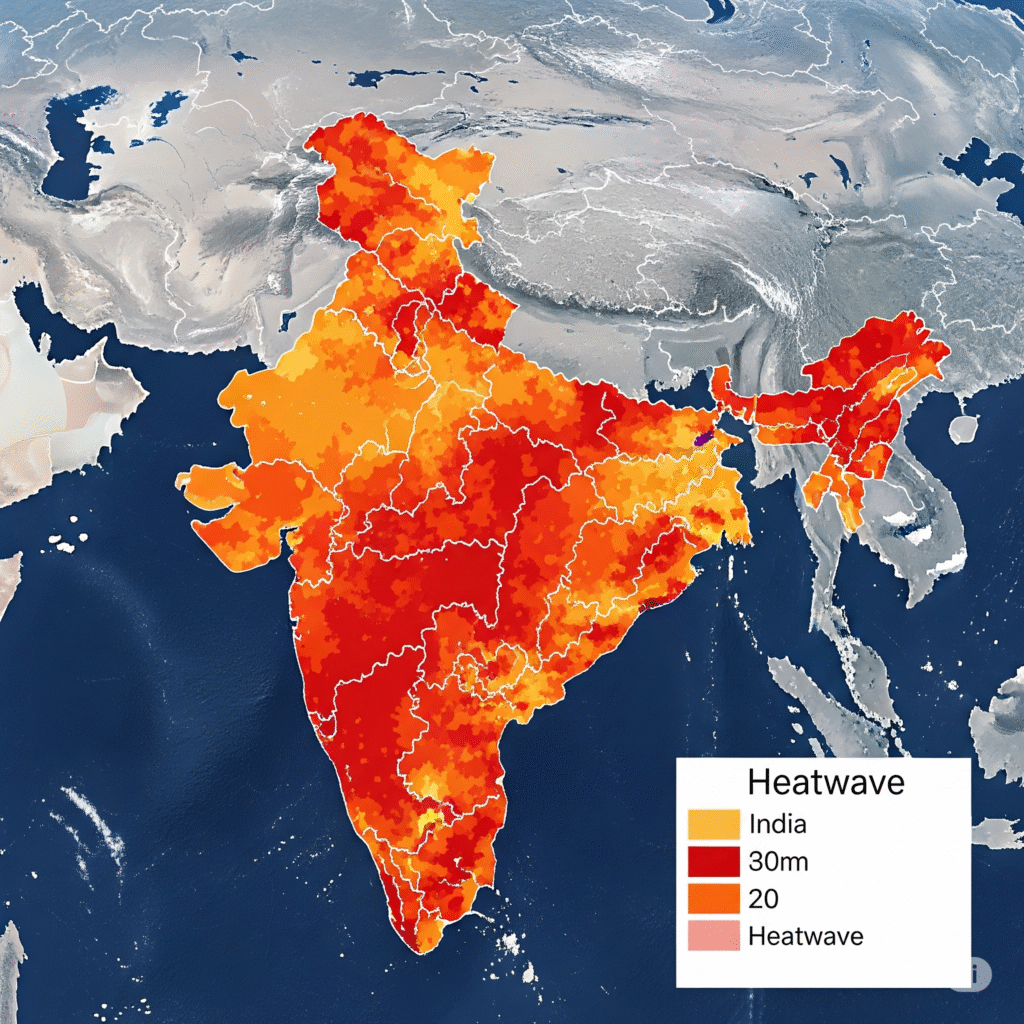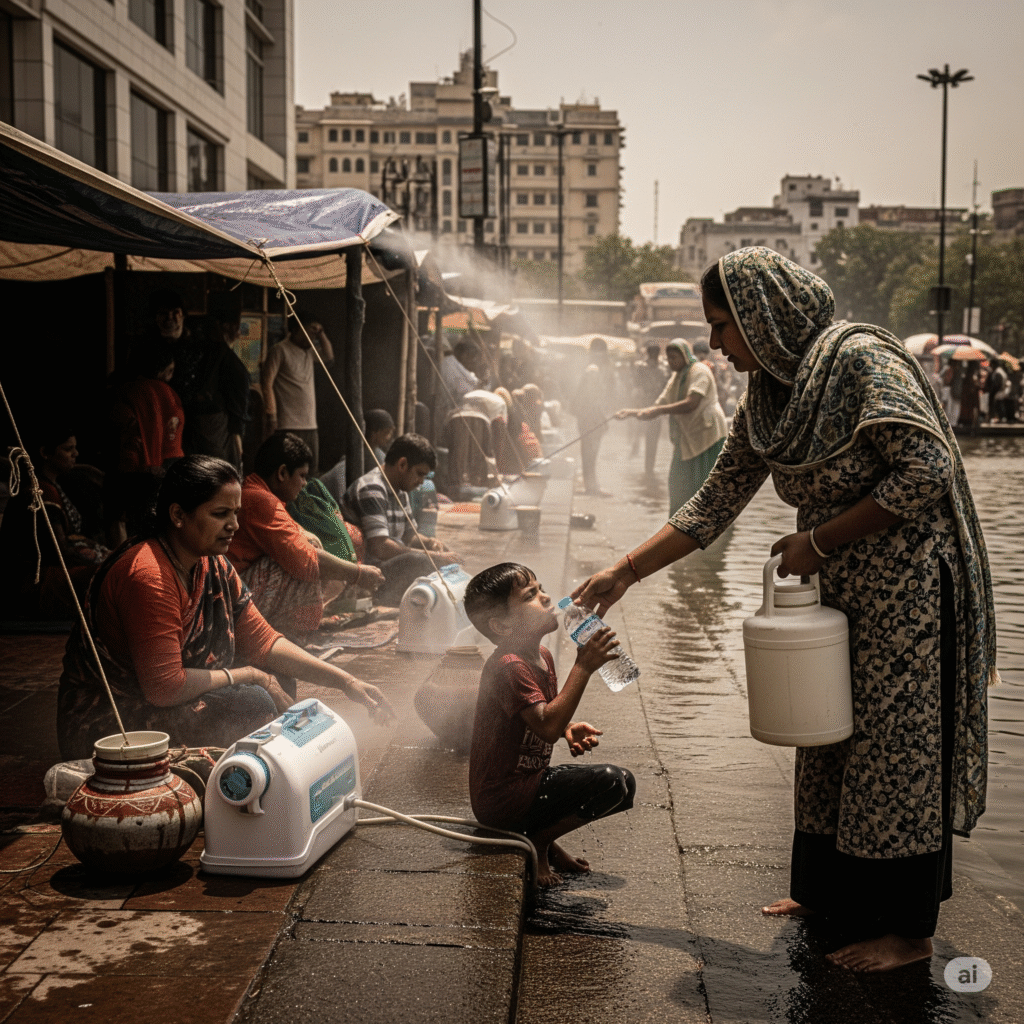India is no stranger to scorching summers, but 2025 has brought an alarming escalation in Heatwaves and Climate Change in India 2025. With temperatures soaring past 45°C in many regions, the country is grappling with deadly consequences. Climate change is no longer a distant threat—it’s a harsh reality disrupting lives, economies, and ecosystems.
This article explores the intensifying “Heatwaves and Climate Change in India 2025”, their connection to climate change, the devastating impacts on health and infrastructure, and actionable solutions to mitigate this crisis.

Why Are Heatwaves in India Getting Worse?
1. Climate Change Accelerating Extreme Heat
Rising global temperatures due to greenhouse gas emissions are making Indian summers unbearable. The Intergovernmental Panel on Climate Change (IPCC) warns that South Asia, including India, will face more frequent and severe heatwaves.
- Urban Heat Island Effect: Cities like Delhi, Mumbai, and Chennai are becoming “heat traps” due to concrete structures, reduced green cover, and excessive air conditioning.
- Erratic Monsoons: Delayed or weak monsoons worsen droughts, drying up water sources and amplifying heat stress.
2. Record-Breaking Temperatures in 2025
- Northern India: Rajasthan, Punjab, and Haryana have seen temperatures cross 48°C, breaking decades-old records.
- Southern States: Andhra Pradesh and Telangana report prolonged heatwaves, with humidity making conditions feel like 50°C.
- Coastal Regions: Rising sea surface temperatures contribute to hotter and more humid weather, increasing heat-related illnesses.
Health Impacts of Extreme Heatwaves
1. Heatstroke and Dehydration
Prolonged exposure to extreme heat leads to:
- Heat exhaustion (dizziness, nausea)
- Heatstroke (fatal if untreated)
- Severe dehydration, especially among laborers and street vendors.
2. Rising Mortality Rates
- Vulnerable Groups: Elderly, children, and daily wage workers are at highest risk.
- Hospital Overcrowding: Government hospitals report a 30% surge in heat-related admissions.
3. Air Pollution and Respiratory Issues
- Heatwaves increase ground-level ozone, worsening asthma and lung diseases.
- Poor air quality combined with heat creates a deadly mix, especially in cities.

Economic and Environmental Consequences
1. Agricultural Collapse
- Crop Failures: Wheat and rice yields drop by 15-20%, threatening food security.
- Farmer Distress: Many farmers face financial ruin due to destroyed harvests.
2. Power Shortages and Blackouts
- Surge in Electricity Demand: AC and cooler usage strains power grids, leading to outages.
- Renewable Energy Challenges: Solar panels lose efficiency in extreme heat.
3. Water Scarcity Crisis
- Drying Rivers and Lakes: The Ganges and Yamuna reach critically low levels.
- Groundwater Depletion: Over-extraction worsens shortages, sparking conflicts.

How Can India Combat Heatwaves in 2025?
1. Government and Policy Interventions
- Early Warning Systems: IMD (India Meteorological Department) must improve heatwave alerts.
- Cool Roofs Initiative: Reflective coatings on buildings to reduce indoor temperatures.
- Urban Greening: More parks, rooftop gardens, and tree plantations in cities.
2. Community-Level Adaptations
- Public Cooling Shelters: Air-conditioned spaces for vulnerable populations.
- Water Distribution Camps: Ensuring access to clean drinking water.
3. Individual Actions to Stay Safe
- Stay Hydrated: Drink at least 3-4 liters of water daily.
- Avoid Peak Sun Hours (12 PM – 4 PM): Limit outdoor activities.
- Wear Light Clothing: Cotton fabrics help in reducing heat absorption.
Read More: Indian General Elections 2025 Live Updates, Top Results & Political Analysis
Conclusion: A Call for Urgent Action
India’s battle against heatwaves in 2025 is a stark reminder of climate change’s devastating effects. Without immediate action, the situation will only worsen, leading to more deaths, economic losses, and environmental damage.
The time to act is now. Governments, businesses, and citizens must collaborate to implement sustainable solutions, reduce carbon footprints, and build climate-resilient communities.
Will India rise to the challenge, or will 2025 be just the beginning of an even hotter future?








